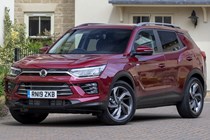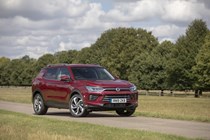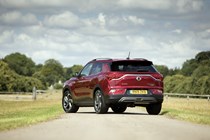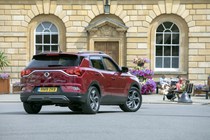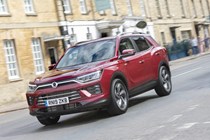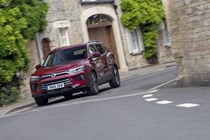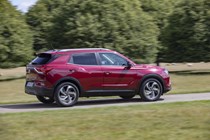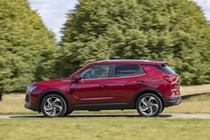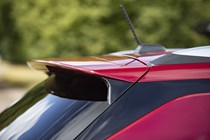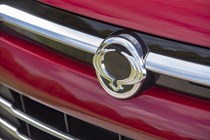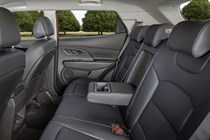
SsangYong Korando SUV (2019-2024) review
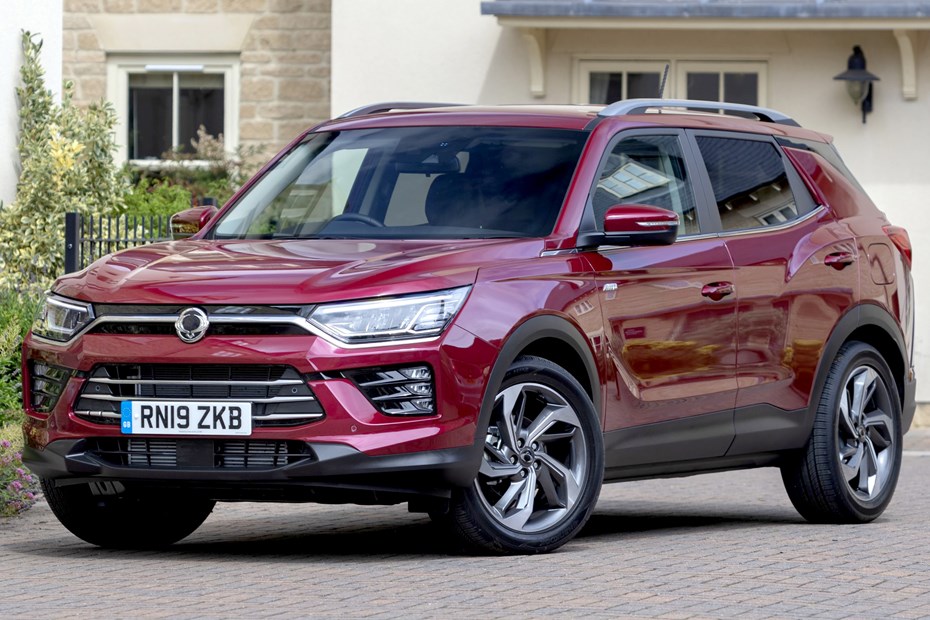
At a glance
| Price new | £18,165 - £39,995 |
|---|---|
| Used prices | £5,610 - £19,798 |
| Road tax cost | £195 |
| Insurance group | 21 - 32 |
Get an insurance quote with

|
|
| Fuel economy | 35.5 - 46.3 miles/kWh |
| Range | 211 - 507 miles |
| Miles per pound | 5.2 - 10.9 |
| Number of doors | 5 |
| View full specs for a specific version | |
Available fuel types
Petrol
Diesel
Fully electric
Pros & cons
- Striking, modern looks
- Class-leading warranty
- Lots of standard equipment
- No longer much cheaper than competition
- Shallow boot
- Poor engine refinement
Overview
The SsangYong Korando’s gone through a bit of a transformation over its long lifetime. Starting out as a badge-engineered Jeep, it moved through old-fashioned off-roader to clunky and not particularly capable SUV. It appealed mainly due to its large size and low price, and became a particularly popular tow car thanks to a high kerbweight and 2,000kg towing limit.
This one has a sharp-edged look, plenty of sophisticated tech and comfort features and a pair of downsized engines. But there’s also a new pricetag, edging the Korando far closer to more established rivals such as the Skoda Karoq, Kia Sportage or Nissan Qashqai. That’s not forgetting that underneath it, true budget champions such as the Dacia Duster and MG ZS have plenty to offer.
It’s powered by a 1.6-litre diesel, which offers 136hp and 340Nm of torque – some 40hp and 60Nm down. Also available will be a turbocharged 1.5-litre petrol, which offers more power on paper – a whopping 163hp. However, it won’t arrive until 2020 and as such we haven’t yet driven a Korando so equipped.
Petrol models will also be offered with a manual gearbox, or an optional automatic on top-spec models. Diesels are automatic only – it’s a six-speed unit that feels somewhat dated. Four-wheel drive is also available on certain diesel trim levels, which should appeal to those who want to do some mild off-roading.
SsangYong has form in this area, and while the Korando won’t challenge the likes of a Toyota Land Cruiser on the rough stuff it has been set up with it in mind – it has impressive approach and departure angles to ensure the nose and rear bumper don’t catch on steep inclines, while the 4WD system can be locked for greater traction.
It’s the interior where SsangYong’s modernisation drive is best felt. Where the previous car felt as though buttons and controls had been placed willy-nilly across the dash, the new car is sensible, logical and well-built.
It’s possible to spec the Korando with some pretty impressive kit. Trim levels kick off with ELX, and step up through Ventura and Pioneer – the latter aimed at the caravanning market. By the time you reach top-spec Ultimate, the Korando offers adaptive cruise control, a nine-inch infotainment touchscreen with Apple CarPlay, Android Auto and TomTom sat-nav, leather upholstery, heated and cooled front seats and full LED headlights.
So could the SsangYong Korando’s rebirth put it at the top of your shortlist? Read on for our full review.



